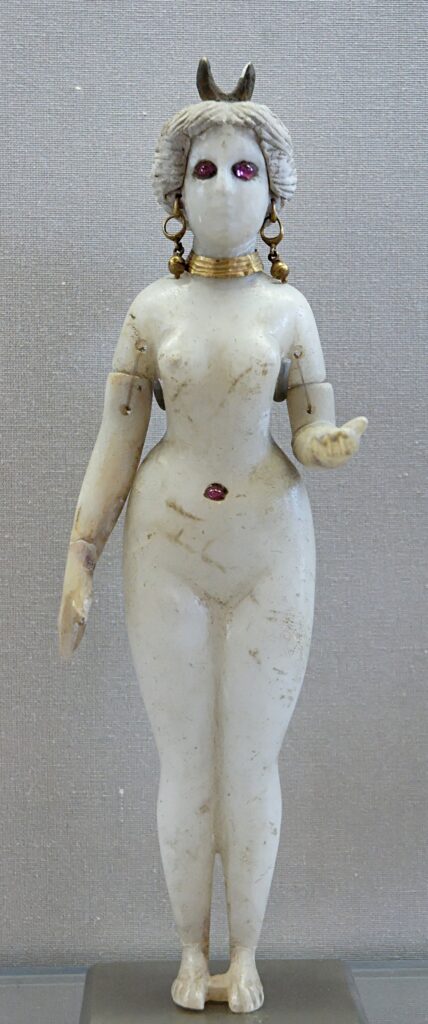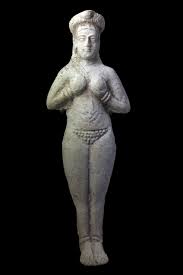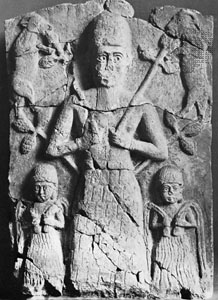Astarte – priests of Astarte (Ishtar)
Astarte has many different names: Iris, Inanna, Astarte, Ishtar, Kali, Demeter, Aphrodite, Virgin Mary, Ceres, Cybele, etc. She is the Great Mother Goddess (the Goddess). The symbol of eternal wisdom, fertility, death and rebirth, healing, astrology, agriculture, protection.

The priestesses of the Goddess, the “holy servants” of the goddess. They were prostitutes. And they were highly regarded members of society. The people treated them with love and respect and ensured their well-being. But free women also “served” the Goddess with their bodies. In Phoenicia, for example, all the virgins entered the temple of the Goddess. And they were available for pilgrims for pennies. So did the Babylonian women, who once made sexual sacrifices in the temple of the Goddess. The sale of the female body was thus a constant service of the temples of the seaports. However, the name “holy prostitute” is misleading to us. Because how can prostitution be sacred?
The matriarchal order
This requires a return to the era of ancient matriarchal societies. When the hunter-gathering tribes became cultivated societies, sexuality, and spirituality, body and spirit were one. They did not know the concept of original sin. The body, the flesh, was not related to the concept of impurity. But they treated it as a natural part of life and earth. Earth cycles were the most important events of life. Various rituals were connected to them.

Men and women worked together. So they were equal, but the priests ministered the Goddess. There was special respect for fertility. People of that time highly valued the power of the Goddess over life and death. The people depicted the Goddess with big breasts, a pregnant belly, or a vulture head. Then, if we follow the “female history” (“herstory”), i.e. Between 4300 and 2300, more Indo-European influxes from the north occurred, resulting in the emergence of a new warrior storm/volcano god and, in parallel, the institution of the reigning king.
The image of a god who was the brother of the Goddess’s son – the lover – was also blended into the Goddess religion. The lover was originally a smaller god. He had also different names: Damuzi, Tammuz, Adonis, Osiris, Baal, Attis. He united with the Goddess every year, he died (sometimes sacrificed), mourned, and then they resurrected him. Thus, with the influxes of the north, revealed the reverence of the couple.

The Hieros Gamos
This appeared in the Holy Marriage, the “Hieros Gamos” rite. They held this Sumerian and Babylonian ceremony annually. The chosen high priestess symbolized the Goddess and engaged in holy sexual activity (sometimes in public) with the king in power, symbolizing God. This symbolically secured the fertility of the area, and the Goddess blessed the king’s rule. But Goddess kept losing its importance.
The end of an area
The final decline, i.e. It happened in 406 when the people destroyed and burned down the temple of Artemis in Ephesus (Turkey). From then on, the rituals were “illegal” . And many believers were burned as witches in the following centuries.
It is important to note that as the status of the Goddess weakened, so did women’s power.
The patriarchal order
After the northern migration, the society transformed. The patriarchal order was established. Previously, women enjoyed greater freedom in all respects. Especially sexually! In a patriarchal society (dominated by men), a clear decision on paternity became necessary. And therefore they “controlled” the female sexuality. The ceremonies in honor of the Goddess were already too sexual. So they had to be suppressed to ensure masculine inheritance. That’s when women started to be subordinate. The decline of the power of the Goddess and women is also seen in legends and stories of creation. The Inanna of the former Holy Marriage, the glorified, revered, sexy and holy Goddess, is transformed into the demonic monster of Gilgamesh Epic.
In the Bible, Eve is to blame for the total fall of mankind. And as a punishment, every woman must endure the pains of childbirth. They linked the natural process of childbirth to the image of shame and sin. The men in Islamic countries veiled the women for their sexual temptation. With that the men confined women. It was a kind of sexually “castration”. Despite the castration of women are not ordered in Islam. But female castration is still practiced in many Muslim countries today. For example in the Middle East and Africa.
The present
This brings us to the present. It would be important to find the original, positive values of the Goddess. Of which sex, eroticism, is an important part. We need to remember what is natural and true. Accept and enjoy our own bodies and sex (good sex of course)! Life is often full of pain and suffering. With kindness, love, love, sex, eroticism we can slightly balance the dark side of life, harmonize opposites!
Read about the sex and eroticism in the ancient Mesopotamia!